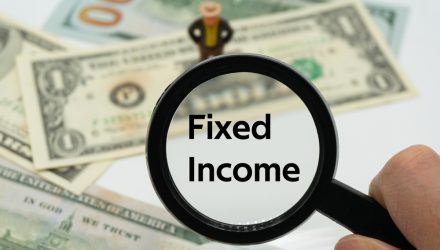Not so long ago, many investors were clamoring for yield outside of the traditional 60/40 stock and bond split. After more than a year of an active rates market, it’s hard to say that’s true today. Fixed income has roared back to life. ETF asset managers of all kinds shared their thoughts on how best to approach the space during the ETF Exchange conference in Miami earlier this year.
Fixed Income in 2024
ETF asset managers can play a role in helping advisors figure out that landscape.
“We’re talking to advisors all over the country and North and South America, and the biggest concern they have is, how do they mitigate the risk of the markets?” WisdomTree Head of Distributions Joe Grogan told NYSE TV Floor Talk host Judy Shaw.
Perhaps the biggest factor looming over fixed income — rate cuts — continues to beguile investors. While investors and advisors wait for a decision from the Fed, which may be more distant now than in months following a hot inflation report this week, investors may want to consider the duration in their fixed income allocations.
“As we’re moving deeper into 2024 and everyone’s trying to figure out when the Fed might change the rate environment and when rates start to go lower, the importance of actually stretching out their duration is becoming more important,” said AllianceBernstein’s Global Head of ETFs and Portfolio Solutions Noel Archard.
Navigating a Challenging Environment
Dealing with that rate environment may require more flexibility. Active fixed income, for example, could stand out and rise to the occasion. Leaning on seasoned managers, active fixed income ETFs may help investors adjust to a complicated rate and macroeconomic environment.
“To me it’s all about active fixed income,” said JP Morgan Asset Management Global Head of ETF Solutions Bryon Lake on Shaw’s program.
“With what is happening in the rate space, investors are all rethinking their fixed income allocations as we speak,” he added. “We want to talk about active fixed income … where investors can dial in the exposures that they’re looking to get in the ETF wrapper.”
Of course, investors may be looking to identify the standout segments in fixed income. Leaning into specific segments with specialized approaches can sometimes help portfolios more than overbroad exposures.
“Unfortunately, most ETFs that focus on bonds focus on every bond, so folks thought ‘this is great, I’m getting diversification,’” F/m Investments President and CIO Alexander Morris told Shaw. “The problem with owning, say, 4,000 bonds in a portfolio is that they don’t all trade as we expect them to.”
“So we really want investors to think about what is an intelligent diversification in their bond portfolio, and what do they expect them to do?” he added.
ETFs to Consider
In speaking to Shaw, both Morris and John Hancock Investment Management U.S. Co-Head of Retail Product Steve Deroian both pointed to income as an important investor outcome this year. Given rising costs from inflation and uncertainty in broader fixed income, current income could offer a big boost to investors, especially those nearing retirement.
“How do I deal with the loss of consistent income and how do I get that from my investments that I’ve earned over the 40 or 50 years I’ve been working?” Deroian said of investor concerns nearing retirement.
Each of those firms offers a variety of fixed income strategies. From the F/m Investments 10-year Investment Grade Corporate Bond ETF (ZTEN) and the JPMorgan Income ETF (JPIE) to the John Hancock Corporate Bond ETF (JHCB), the AB Tax-Aware Short Duration Municipal ETF (TAFI), and the WisdomTree Floating Rate Treasury Fund (USFR), investors have many different options with which to build their fixed income allocations for 2024.
For more news, information, and strategy, visit the Modern Alpha Channel.








